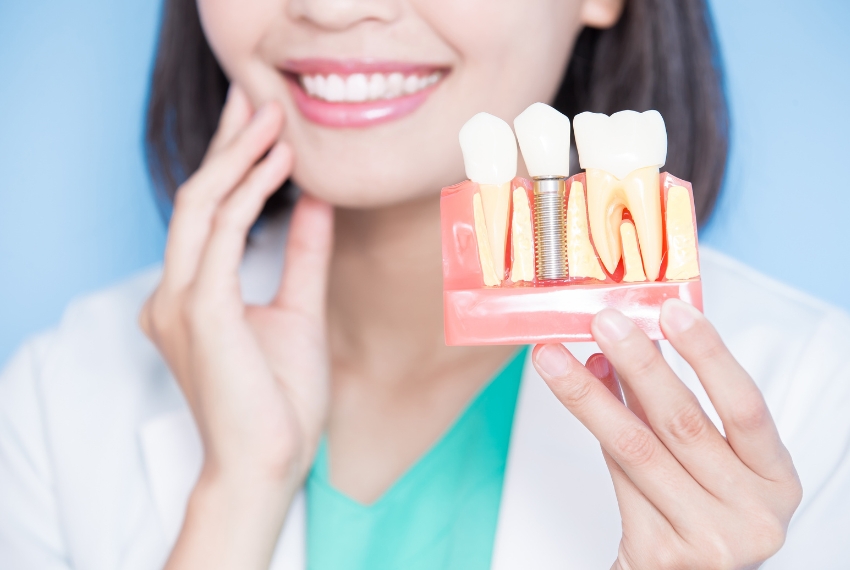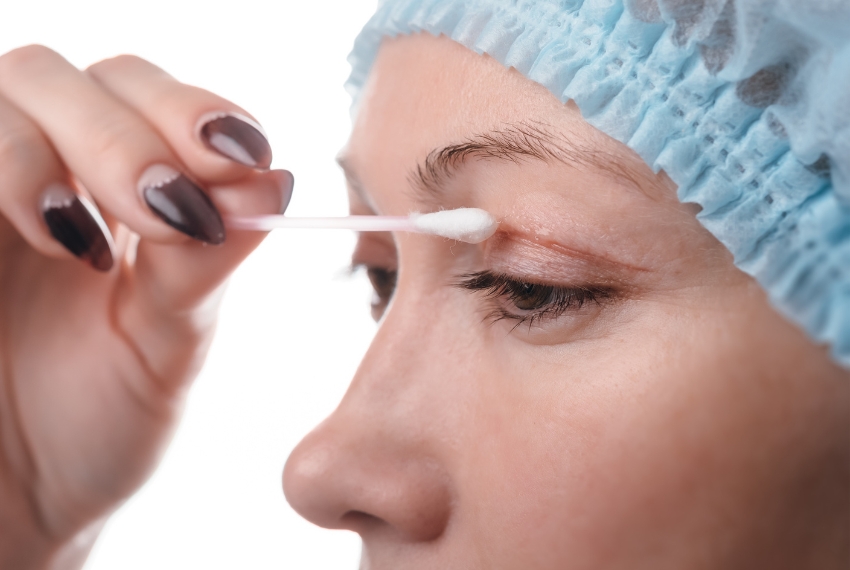
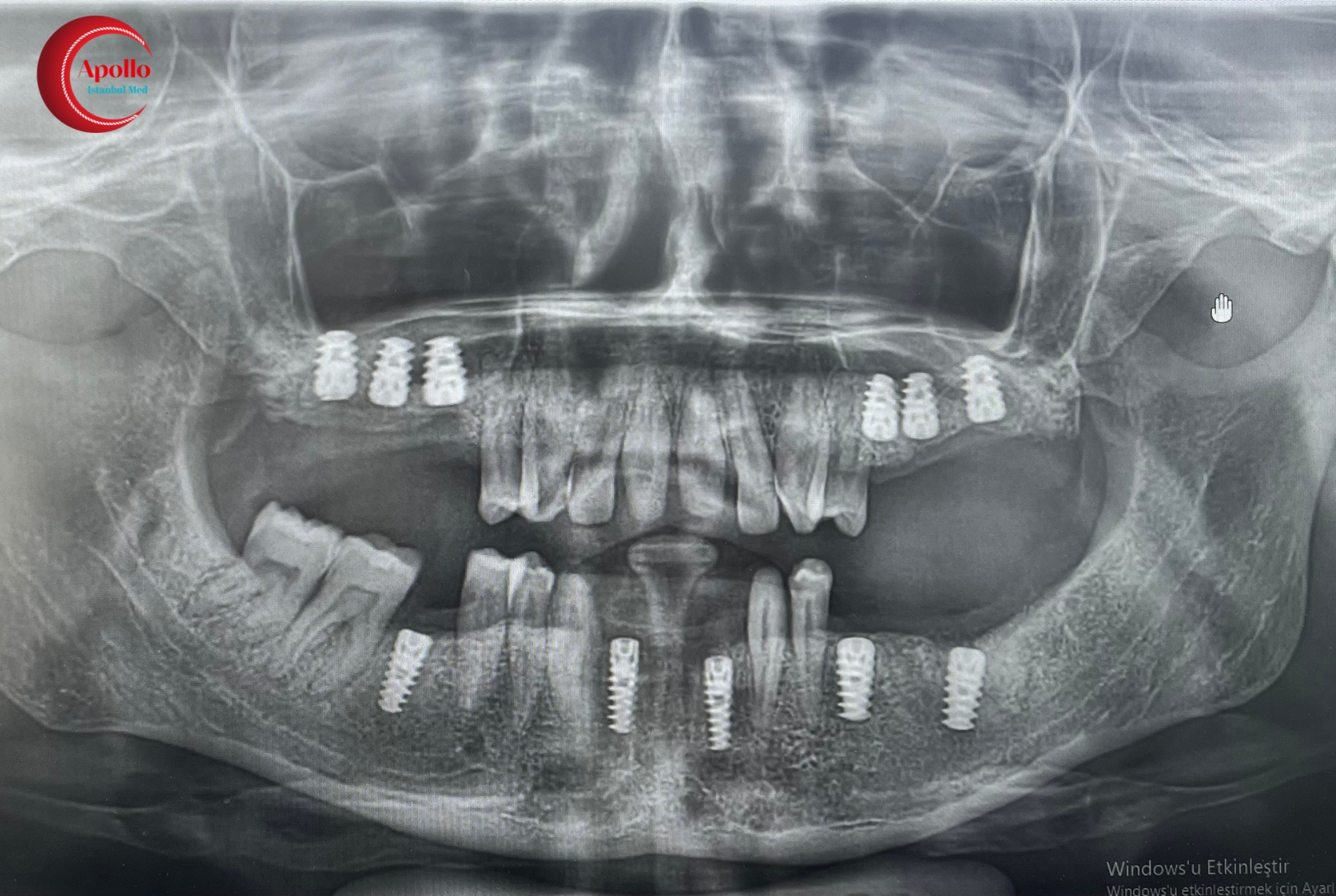
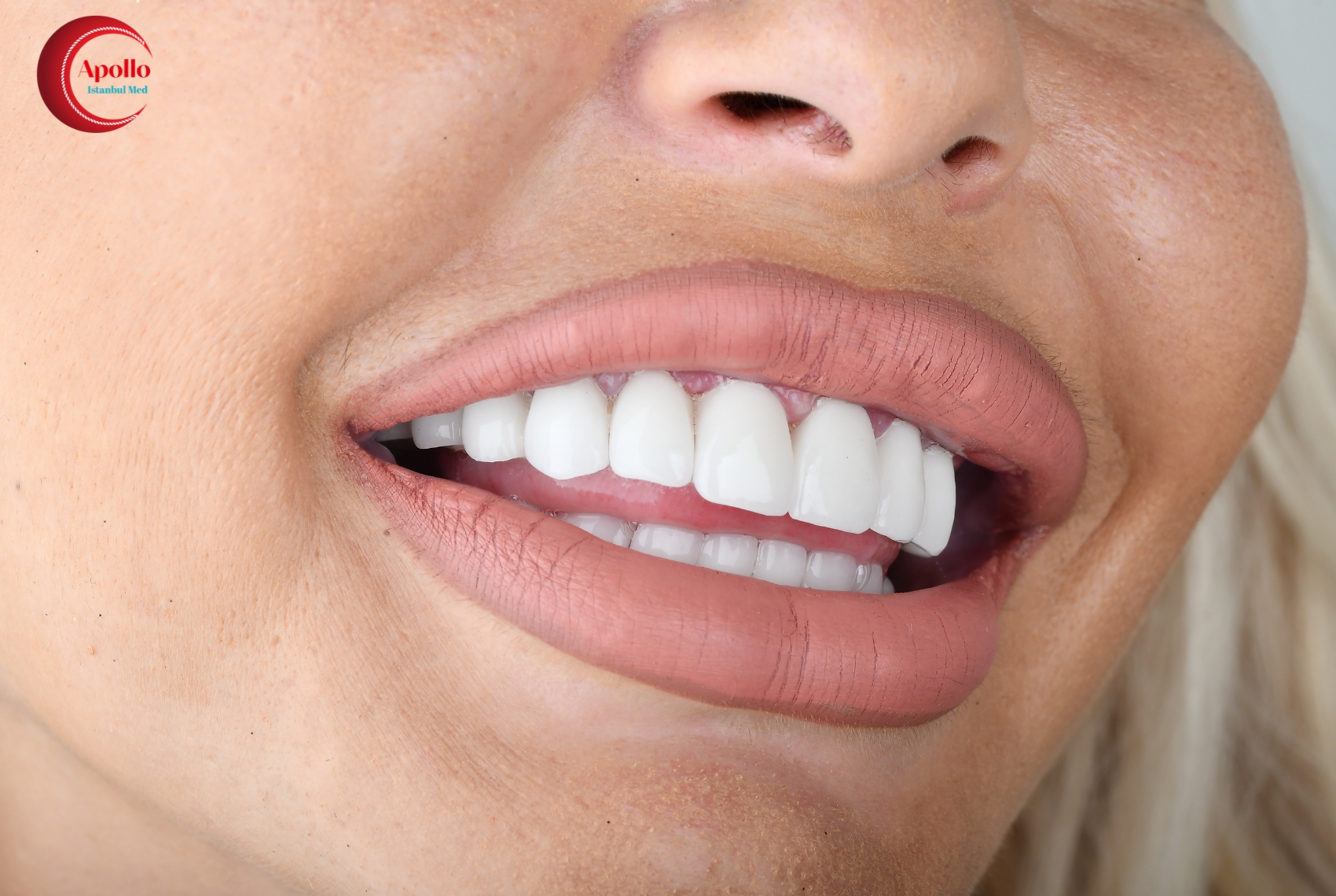
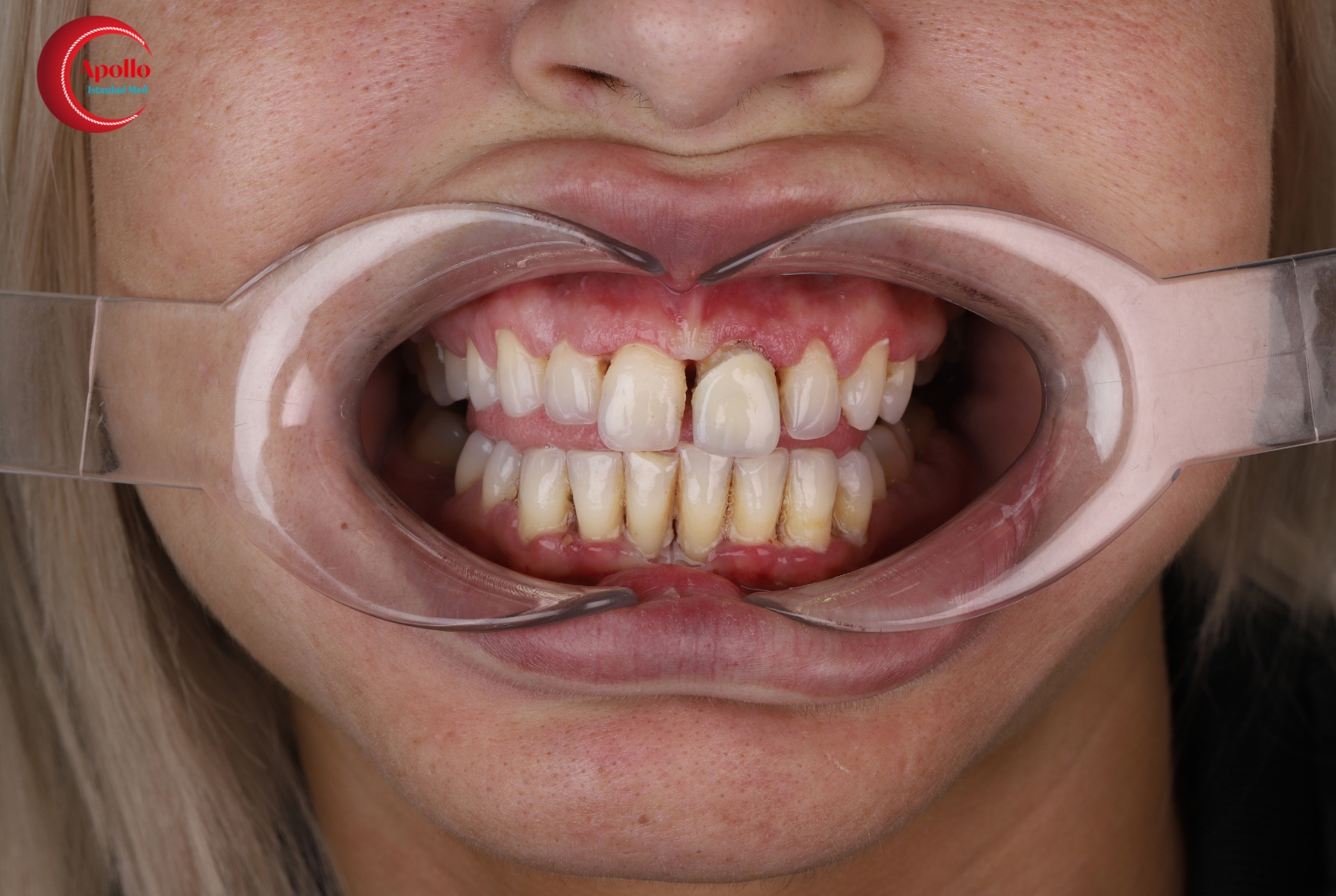
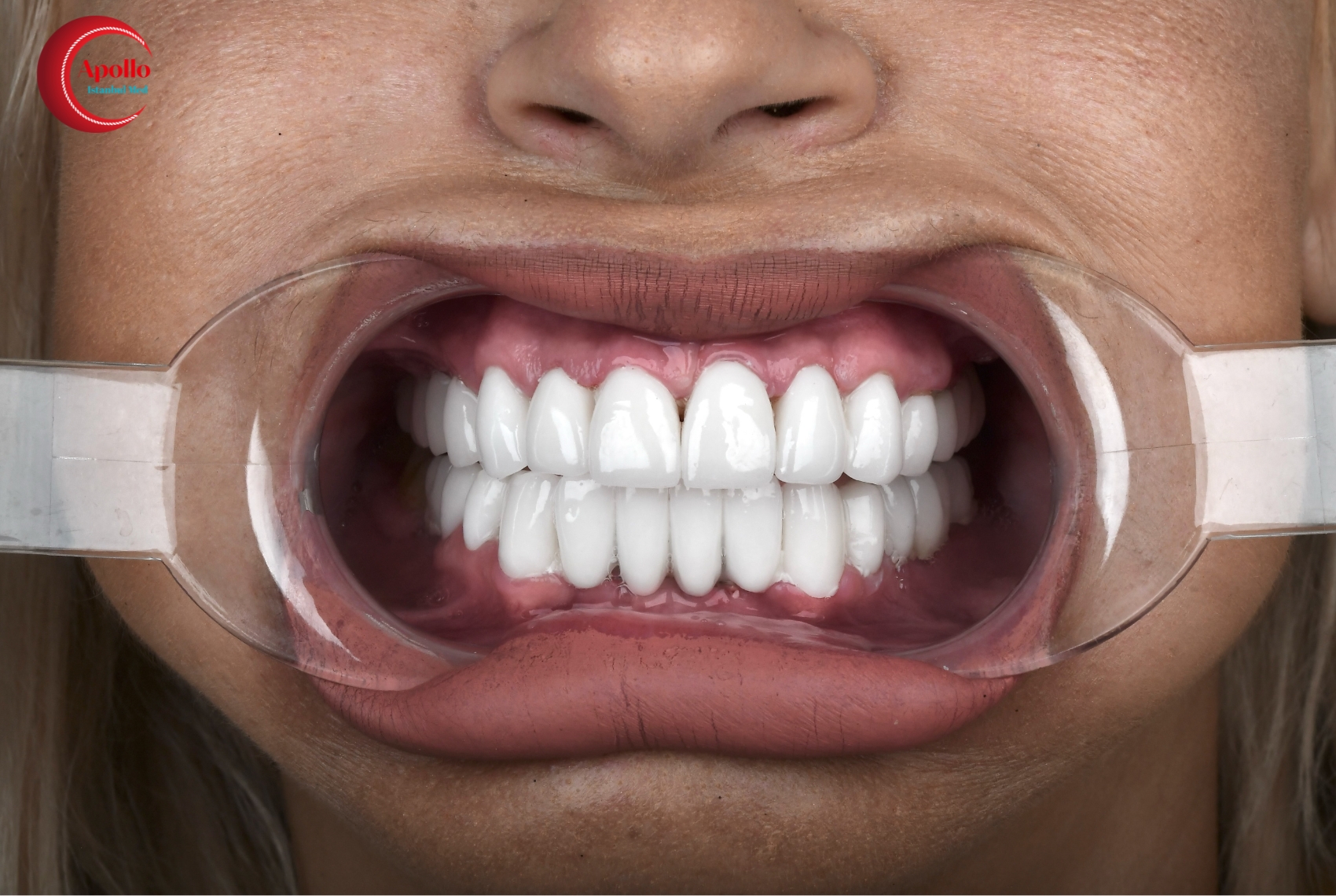
Iskra's Smile
A severe form of periodontal disease developed due to careless medical treatment.
The patient was referred without being adequately treated, resulting in the development of gingivitis.
Diagnosed with multiple lost teeth, gums are extremely painful.
On subsequent visits to the dentist with complaints of painful gums, she was referred with only a prescribed antibiotic.
Almost all teeth are wobbling and are expected to be lost as the current situation progresses.
There are teeth that have not been treated correctly and are closed with problems leading to new complications.
Multiple bacterial infections had developed under the gums.
The bacteria had multiplied and were attacking the gums causing them to recede and exposing the teeth and their roots.
Multiple nerves had become exposed on the surface.
The alveolar bone had atrophied and degraded as a result of the spread of the bacteria, and had subsequently morphed into a sponge-like structure imperceptible after tomography.
When the bone was opened for sinuslift, individual implant treatment was required, with a different solution than previously planned.
Initially, gingivectomy with laser was performed. This is the most advanced gingival intervention solution, which, in addition to remodelling the gingiva, also destroys bacteria and their nests of spread.
Despite dozens of anaesthetics, the procedure was very painful for the patient and we decided to perform the subsequent dental manipulation in an operation room in a medical hospital with an additional medical team under full anaesthesia and save all the pain in a single medical intervention guided by our maxillofacial surgeon.
Teeth not salvageable were extracted.
The remaining teeth that needed treatment were treated and filed down for subsequent placement of zirconia crowns.
Initially, a different number of implants were planned to be placed plus two sinus lifts with membranes and bone graft.
After opening the bone for a sinuslift, it turned out that one could not be performed due to the irreversible bone remodeling that would not allow it, compromising the overall treatment with implants, and the placement of crowns.
Our surgeon solved the problem with a case-by-case approach, modifying the implants in situ in the operating room, making them a shorter length to ensure secure ingrowth into the bone to prevent them from being rejected (due to scar tissue formation).
He also increased the originally intended number of implants and placed them in a continuous series to create a stable line of attachment in the bone.
Temporary, ceramic crowns were made on the retained teeth to allow the patient to eat normally.
Instructions were also given on what measures and oral hygiene to follow in order for the subsequent healing and treatment to be successful.
Despite being a smoker, she was extremely meticulous in carrying out the prescriptions and even over complied with the instructions which was commendable.
After 3 months, she came in for a full schedule of zirconia crowns.
A follow up X-ray and CT scan was done.
The bone and implants were perfectly healed and integrated.
The crowns were newly shaped but needed additional soft tissue grafting to completely disappear the rubber smile effect.
We took tissue from the palate (the same is self healing) and grafted it with surgery with local anesthesia.
The patient has large teeth and we kept the original proportions, with correction of the front upper teeth, and her individual wishes for appearance, and color.
Within the standard timeline of a few days, we did the tooth design and placed the final zirconium crowns.
In the photos and videos you can see the overall before and after difference, and the final smile aesthetic.




